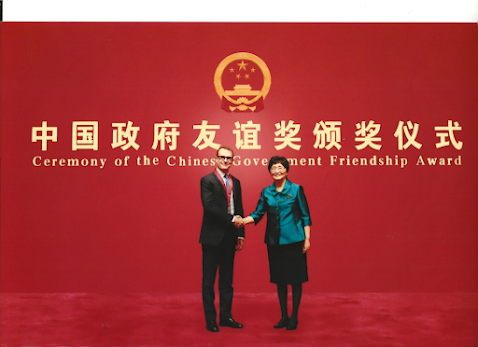The Legal Working Committee of CBCGDF Proposed Revision Suggestions for the Guiding Opinions on Promoting Green and Low Carbon Risk Control and Restoration of Soil Pollution (Draft for Suggestions)
The risk control and restoration of soil pollution is an important task to ensure public health and promote the sustainable use of soil resources. Encouraging and guiding the implementation of green and low-carbon risk management and restoration (GLRMR) is a specific action to implement "coordinating industrial structure adjustment, pollution control, ecological conservation, climate-change addressing, promoting carbon reduction, pollution reduction, green expansion, growth, and promoting ecological priority, conservation and intensification, and green and low-carbon development". It is also an urgent need for the green and low-carbon transformation and development in the field of soil restoration. In order to accelerate the GLRMR, the Ministry of Ecology and Environment of the People’s Republic of China has organized the drafting of the "Guiding Opinions on Promoting Green and Low Carbon Risk Control and Restoration of Soil Pollution (Draft for Suggetions)" and issued a notice on June 26th, publicly soliciting opinions from society.
The Legal Working Committee of the China Biodiversity Conservation and Green Development Foundation (CBCGDF) proposed 12 amendments suggestions and submitted them to the Soil Ecological Environment Department of the Ministry of Ecological Environment, hoping to contribute to the risk control and restoration of soil pollution.
The Revised Contents are as follows:
- To add the “30*60 Goals” and “the Law on the Prevention and Control of Soil Pollution and other laws, regulations and normative documents” to the first paragraph.
- To add “Prevention first” and “units and social organizations such as industry associations” to the Article (I).
- To add “promoteing the entire process of green and low-carbon restoration” to the Article (II)
- To add “research on domestic innovation practices”, “ecology” and “green and low carbon” to Article (III)
- To add “technical specifications” to Article (IV)
- To add an Article V to Chapter I, which is:
Establish a public participation and information disclosure system for green and low-carbon restoration
To create an atmosphere of green and low-carbon soil restoration with the participation of the whole society, departments such as ecological environment, natural resources, and forestry should promptly disclose information about soil pollution restoration, and encourage the public to report and accuse illegal activities related to soil pollution and soil restoration.
7. To add “ensuring ecological security” and “smelt industry” to Article I, Chapter II
8. To add “establish a retrospective evaluation mechanism” to Article V, Chapter II
9. To modify the “research foundation” to “basic research” in Article I, Chapter III
10. To add “support social organizations to widely raise funds to participate in green and low-carbon restoration” to Article II, Chapter IV, with emphasizing that the sources of funds mentioned earlier are from the government.
11. To modify the “experience exchange” to “experience share and exchange” in Article III, Chapter IV
12. To add “August 15th (National Ecological Day)” to Article IV, Chapter IV.
Editor: Richard
Checked by YJ
Contact: v10@cbcgdf.org; +8617319454776

Contribution
Do you know? CBCGDF is a non-profit organization. We rely on crowd-funding and donations. You have the opportunity to help us to advance biodiversity conservation. Donate TODAY to power up the movement to make it a better world for all life.



Comments
Post a Comment